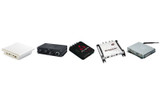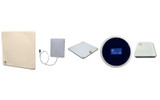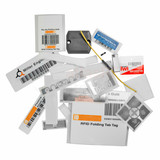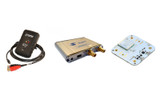RFID File Tracking: Handheld Readers vs. Fixed Readers
Posted by Will Pugh on Jan 21, 2015
Introduction
While most companies do not need to keep track of every single piece of paper,
file tracking is an increasingly common RFID application since it is a great way to increas
Read More
Read More
Software vs Firmware vs Middleware: What is the Difference?
Posted by Suzanne Smiley on Dec 03, 2014
Introduction
A few different types of software are common components of most RFID systems – firmware, middleware, and application software. Though all of these components are technically softwar
Read More
Read More
Understanding Near-Field and Far-Field Antennas
Posted by Suzanne Smiley on Nov 12, 2014
Introduction
The electromagnetic field that surrounds an
RFID antenna can be broken up into two segments – near-field and far-field. Typically, near-field is defined as the field around the ant
Read More
Read More
The Best RFID Tag For Your Application: 7 Key Factors to Consider
Posted by Suzanne Smiley on Oct 14, 2014
Introduction
Passive RFID tags electronically store data enabling RFID readers and antennas to identify and track objects. Each RFID tag has specific attributes that define its limitations physica
Read More
Read More
How to Select a UHF RFID Reader
Posted by Suzanne Smiley on Sep 30, 2014
Introduction
Selecting the right
UHF RFID Reader for your application is of the utmost importance. Not only is the RFID reader the brain of the RFID system, but each reader has its ow
Read More
Read More
3 Guidelines For Choosing A Passive UHF RFID Antenna
Posted by Suzanne Smiley on Sep 29, 2014
Introduction
Choosing a passive
UHF RFID antenna can be a confusing task to those who are new to RFID. Passive RFID antennas typically look physically similar, so it is primarily their technica
Read More
Read More
Pitch, Yaw, and Roll – Positioning RFID Tags
Posted by Suzanne Smiley on Sep 24, 2014
Introduction
Previously, our article
6 Factors That Affect RFID Read Range discussed how each component of an RFID system affects its overall performance. Regarding RFID tags specifical
Read More
Read More
Monostatic vs Bistatic RFID Systems
Posted by Suzanne Smiley on Jul 18, 2014
Introduction
Need to know the difference between monostatic and bistatic RFID? Below is a quick explanation of the differences between these types of RFID readers and antennas.
Monostatic
Read More
Read More
The Importance Of Testing RFID Solutions
Posted by Timothy Pribyl on Mar 17, 2014
Testing is key to launching a successful RFID implementation. While RFID works well in a wide variety of environments, testing is necessary to find the optimum RFID tags, readers, and antennas for
Read More
Read More
Four Common Applications for USB RFID Readers
Posted by Suzanne Smiley on Sep 04, 2013
Anyone with an application requiring a small, low cost reader would do well to consider
USB RFID readers. USB readers have most of the basic capabilities of their larger counterparts, just with
Read More
Read More
RFID Tag Best Practices: 13 Tips for in the Field Tagging
Posted by James Thrasher on Aug 08, 2013
Even with a perfect RFID hardware configuration, the success of the entire system depends on the ability to obtain a consistent read from your
RFID tags. With zero visibility of your assets, all
Read More
Read More
Types of Memory in Gen 2 UHF RFID Tags
Posted by Shain Armstrong on May 01, 2013
Updated: 7/17/2024; Originally Published: 5/01/2013
Gen 2 UHF RFID tags are comprised of an antenna and a chip (more accurately called an integrated circuit, or IC). In this article
Read More
Read More
Sign in













